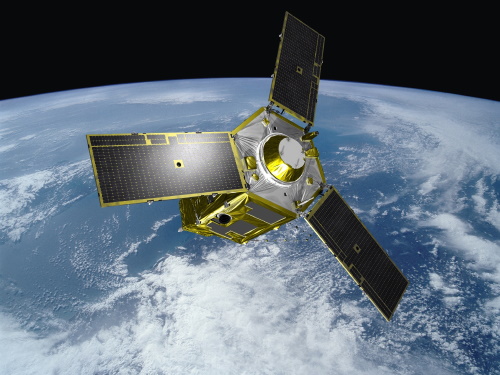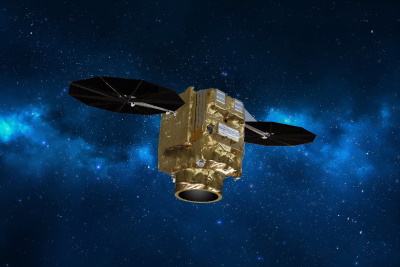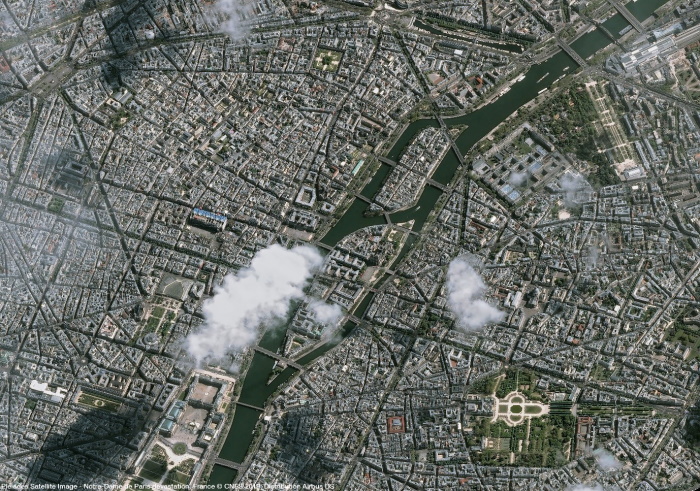- Learn & Discover
- Pléiades celebrates 10 years a...
Pléiades celebrates 10 years and extends satellite fleet with Pléiades Neo
17 Dec 2021

ESA is proud to mark the 10-year milestone of the Pléiades programme, a forerunner in providing very high resolution (VHR) commercial satellite imagery ideal for precision mapping and in-depth intelligence.
The twin satellites Pléiades-1A and 1B were launched on 17 December 2011 and 2 December 2012, respectively. For a decade now the satellites have provided panchromatic imagery with a spatial resolution of 0.5 m and multispectral imagery with a spatial resolution of 2 m. In addition, with the recent launches of the first two Pléiades Neo satellites, the Pléiades programme’s commercial offering has been enhanced even further.
Pléiades is a Third Party Mission (TPM) built and operated by Airbus Defence and Space on behalf of CNES, with the objective to provide a long-term perspective on a number of high-quality data products, which have been used extensively in a range of applications such as forestry, geology and marine.
“There has always been a steady large user demand within the scientific community for Pléiades’ optical very high resolution data, and we have seen continuous high-quality in the images provided by the Pléiades constellation over its lifetime,” said Roberto Biasutti, Ground Segment Manager from ESA’s and Third Party Mission Ground Segment Section.

“Pléiades can satisfy user’s needs with high capacity, the ability to acquire images of all areas with a re-visit time of only two days.”
With the enhancement of the constellation with two new Pléiades Neo satellites (launched 29 April and 17 August 2021), the capacity to acquire sub-meter VHR optical data all over the world will improve to intra-day revisit.
As well as the improved resolution to 30 cm, the major plus of the new agile Neo Pléiades constellation is this enhanced revisit frequency. Both Neo satellites are now positioned in their final orbit 180 degrees apart, doubling the number of visits per day anywhere on Earth while offering a higher re-tasking rate.
“With optical instruments global coverage can be hampered by cloud, increasing the constellation with two satellites will therefore increment the possibility to have a good image over a specific area during a specific time. This makes the Pléiades constellation of special interest to programmes such as the International Charter of Space and Major Disasters,” added Biasutti.
The Copernicus Contributing Mission Activity, which as part of the Copernicus Programme provides commercial VHR data to Copernicus Services, also finds Pléiades data useful as a complement to Sentinel data. The focus of the Contributing Mission activity is to respond with fast VHR satellite acquisitions to critical man-made situations or natural disasters, such as in the Copernicus Emergency Management Service.

“We are very pleased to add Pléiades Neo satellite data to ESA’s Earthnet Programme data offering in early 2022,” said Peggy Fischer, Mission Manager of ESA Third Party Missions. Through the Earthnet programme ESA has for a decade now facilitated access to Pléiades VHR data free-of-charge for scientific, research and pre-operational Earth Observation based applications.
Through the Airbus proprietary data access platform OneAtlas, users have the added advantage to access the catalogue to browse the data in full resolution, before ordering a specific image.
Find out more about the Pléiades data products ESA offer: